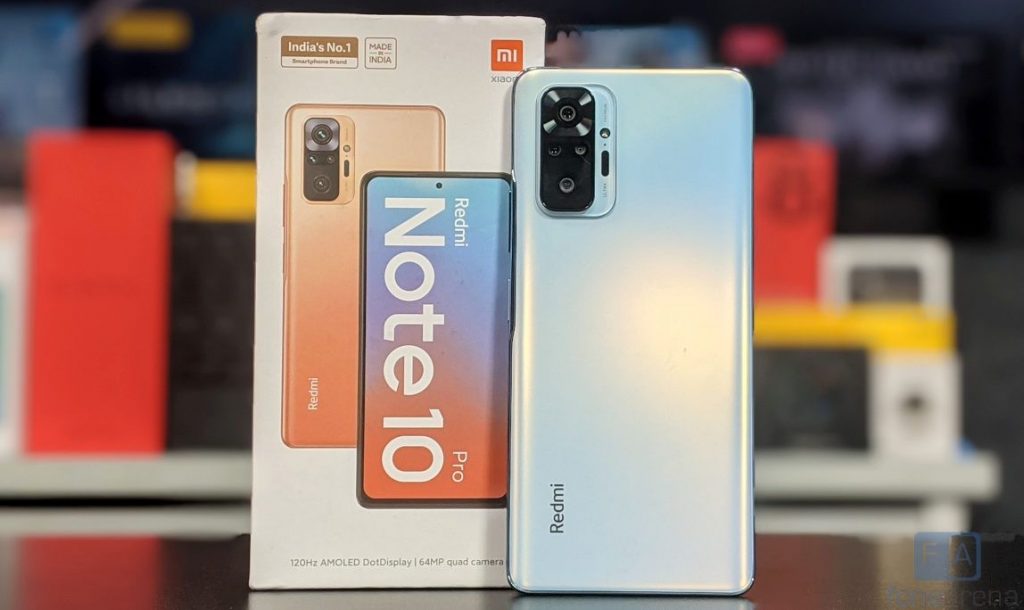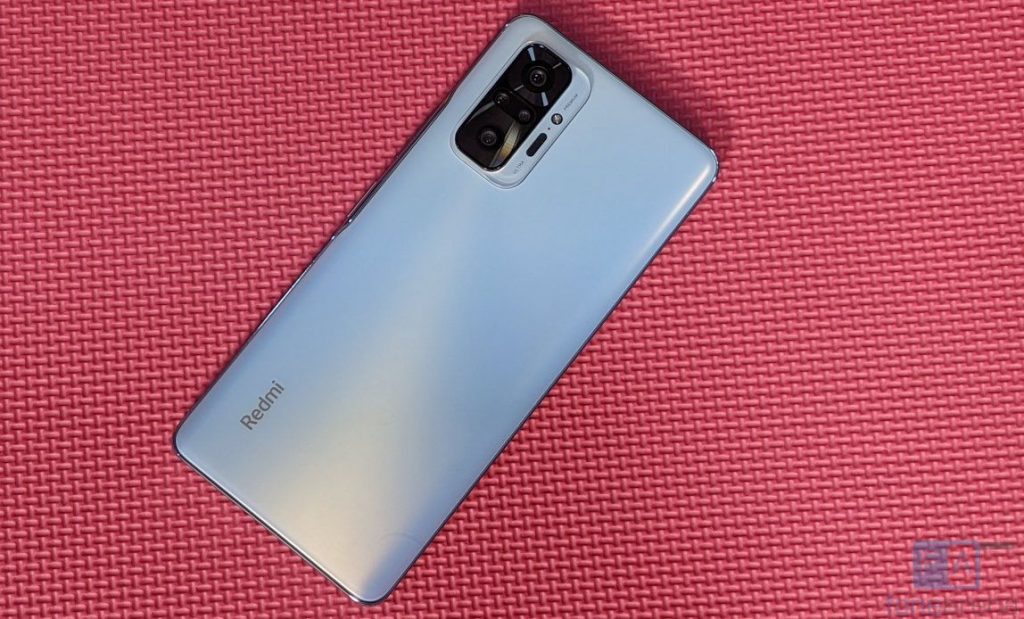

Xiaomi launched the Redmi Note 10 Pro series smartphone in India last month as the successor to last year’s Redmi Note 9 Pro series that was launched last year. The main difference between the Note 9 Pro and the Pro Max were cameras and support for faster charger in the Max version. However, this time the company has offered 33W fast charging in both the versions, so the only difference is the 64MP primary rear camera in the Note 10 Pro instead of 108MP camera in the Note 10 Pro Max.
Since you get all the features in the Note 10 Pro except for the larger camera sensor, is the 64MP camera enough, or should you pay Rs. 3000 more just for the better camera? Let use dive into the review to find out. Also check out the Redmi Note 10 Pro Max review here since I won’t mention much about the software part since these are similar.
Hardware and Design


We have the Redmi Note 10 Pro 8GB + 128GB version Glacial Blue colour. This has a frosted glass back so that it doesn’t attract fingerprints. The Evol design with curved glass back looks and feels premium and the weight distribution is good. At 192 grams and is 8.1mm thickness, this is thinner and lighter than the predecessor. The phone has IP53 ratings, but you can’t immerse in water since it is not IP67 or IP68 rated. The phone packs a 5020mAh built-in battery, the same as the predecessor but the 33W fast charging compared to 18W charging is different.
Display
It has a 6.67-inch (2400 × 1080 pixels) Full HD+ 20:9 aspect ratio AMOLED DotDisplay with 2.5D curved glass screen and a pixel density of about 384 PPI, same as the Note 10 Pro Max. The display is bright and the sunlight legibility is good as well, thanks to 700 nits (typical), 450 nits manual and 1200nits peak brightness, which is enabled when you are watching HDR content. It has 4,500,000:1 contrast ratio and 100% DCI-P3 colour gamut, so the colours are vibrant.
It has 120Hz display refresh rate and 240Hz touch sampling rate offering a buttery smooth user experience especially when you are scrolling through the UI and in compatible gaming. This doesn’t have adaptive refresh rate like the POCO X3, Mi 10i or the Mi 10T so, it can only switch between 60Hz and 120Hz. It has HDR 10 support, which works for YouTube and even Netflix which is rare to see in phones in the price range. There is Corning Gorilla Glass 5 protection.
You also have Always-on-display, However, it says that it can only display items only for 10 seconds after tapping. The phone doesn’t have DC Dimming support. There were complaints from users regarding the screen flicking issues in 120Hz refresh rate in low brightness. This has been addressed in the latest MIUI 12.0.10.0 update which is gradually rolling out to all the users.
The button placements and ports are the same as the Note 10 Pro Max, and it has a dedicated dual SIM and a microSD card slot. It features X-axis linear vibration motor, which enables over 150 custom vibration patterns across the UI for the best haptic experience, and the different can be felt when using the phone. This is good for a phone in the price range. The 5020mAh (typical) built-in lasts for a whole day even with heavy use in 120Hz with 4G enabled. With average use it will easily last 2 days. Since the phone has support for 33W fast charging, it takes about 1 hour and 20 minutes to charge from 0 to 100%, and 0 to 50% takes about half an hour using the bundled charger.
The Snapdragon 732G offers smooth performance and a good gaming performance. We did not face any issues or frame drops in the graphic-intensive games. Thanks to 120Hz refresh rate, gaming was super smooth in games that support it. It gets a bit warm on intensive gaming on 4G and intensive camera use, but it doesn’t get too hot to handle. It uses dual graphite sheets to keep the temperature down, but it doesn’t have liquid cooling like the POCO X3 or the X3 Pro.
The phone supports 4G VoLTE with Dual 4G VoLTE that offers 4G in both the SIM cards at a time, has Snapdragon X15 Cat-12 LTE modem and also supports Carrier Aggregation on 4G. Other connectivity options include Dual-Band Wi-Fi 802.11 ac, VoWiFi / Wi-Fi calling support, Bluetooth 5.1 LE and GPS. It doesn’t have NFC support. The call quality is good, and we did not face any call drops and the earpiece volume was loud. It has stock dialer and messaging apps.
The Redmi Note 10 Pro’s body SAR is 0.648W/Kg (Distance:15mm), head SAR is at 0.830W/Kg, same as the Note 10 Pro Max. This is well under the limit in India which is 1.6 W/kg (over 1 g).
Camera
Let’s come to the main thing, the camera. The Note 10 Pro has a 64MP rear camera with a Samsung GW3 1/1.97″ sensor, 0.7μm, f/1.9 aperture and 6P lens. It also has EIS support. The secondary 8-megapixel 120° ultra-wide sensor with f/2.2 aperture, 2-megapixel depth and 5-megapixel tele macro sensor with 1.75μm pixel size and f/2.4 aperture and the 16-megapixel front camera with 1μm pixel size and f/2.45 aperture are same as the Note 10 Pro Max.
The camera UI is familiar with other Xiaomi smartphones running MIUI 12. You get all the features such as Pro, Night, 64MP, Short Video, Panorama, Documents, VLOG, Slow motion, Time-lapse, Dual video, AI watermark, Long exposure and Pro mode lets you adjust white balance, focus, shutter speed (1/4000s to 30 seconds), ISO (50 to 6400) and option to select main, ultra-wide and macro lens. You can also shoot in RAW in Pro mode and enable focus peaking, exposure verification and more options. There is ‘movie frame’ mode works both rear camera front cameras and for video, but there is no separate portrait video mode. Xiaomi has enabled Cam2API by default, so you can side-load ported Google Camera APKs for advanced editing including RAW capture.
Coming to the image quality, daylight shots came out well with good dynamic range. It uses 4 in 1 Super Pixel technology so the output you get is 16MP. HDR shots are better with improved dynamic range. 8MP wide-angle shots are decent. 64MP mode that offers a lot of details and can go up to 20MB in size. Even though there is no telephoto lens, it uses the software for offering up to 10x digital zoom. This is like taking an image and cropping up later. Even in the 2x zoom images start to lose details, so it is not recommended going beyond 2x if you don’t want to lose details. The dedicated 5MP tele macro sensor is useful compared to the normal 5MP or 2MP macro camera since it shoots in 2x by default, but you can also zoom it by 1x further. The 2MP depth sensor helps in good edge detection in portrait shots.
Low-light shots are good, thanks to 4-in-1 Pixel binning and the night mode is even better making the images brighter offering more details. Images with flash are good and the flash is not overpowering. Daylight front camera shots from the 16-megapixel front camera is decent, but not the best even in daylight conditions due to the tiny sensor. Output is 16MP in resolution, and the image size is around 5MB. Portrait shots have decent edge detection even though it is done using software, but these shots are close to 8MP in size.
Overall the 64MP camera in the Note 10 Pro is good, but the Note 10 Pro Max’s 108MP camera offers slightly better images since the sensor is bigger and the 9-in-1 Super Pixel technology offers better low-light images.
Check out the camera samples (Click the image to view the full resolution sample.).
It can record videos at 4k resolution at 30 fps, 1080p at up to 60 fps, and it also has slow motion 720p resolution video recording at up to 960fps, but this should be 240fps converted into 960fps since the Snapdragon 732G officially supports only up to 240fps slow motion recording. You can also shoot 1080p videos using the telemacro camera and ultra-wide camera and even shoot timelapse videos using the macro camera. The phone lacks OIS, but you get EIS which works only in 1080p 30fps mode. The front camera can record 1080p videos at 30fps.
Video quality is decent but could have been better. There is ultra steady mode in 1080p mode which uses EIS to stabilize videos, but there are frame drops. Check out the video samples below.
Conclusion
At a starting price of Rs. 15,999, the Redmi Note 10 Pro is another excellent value-for-money Redmi Note Pro series phone. It has all the features of the Note 10 Pro Max such as AMOLED 120Hz refresh screen, offers smooth performance, has the useful 5MP telemacro camera and a large battery that offers brilliant life and has support for fast charging without having to spend extra amount for the Max version unlike the Note 9 Pro series.
If I give 7/10 for the Note 10 Pro Max’s camera, then the Note 10 Pro gets a 6/10 for the camera considering the price point, but the low-light camera performance is just average in both the phones. Pros and cons of the Note 10 Pro are the same as the Note 10 Pro Max.
Alternatives
There are fewer alternatives in the price range that offer equivalent specifications for the price. POCO X3 is a good alternative after the price cut if you need a better ultra-wide camera, bigger battery, but can compromise on the LCD screen and a slightly bulky design. Redmi Note 10 Pro Max with 108MP sensor is also a good choice if you can spend more.
Availability
Priced at Rs. 15,999 for the 6GB RAM with 64GB storage version, Rs. 16,999 for the 6GB RAM with 128GB storage version and Rs. 18,999 for 8GB RAM with 128GB storage version, it is available from Amazon.in, Mi.com as well as Mi Home stores. Still there is a huge demand for the phone, so it is available only through flash sale every week.




